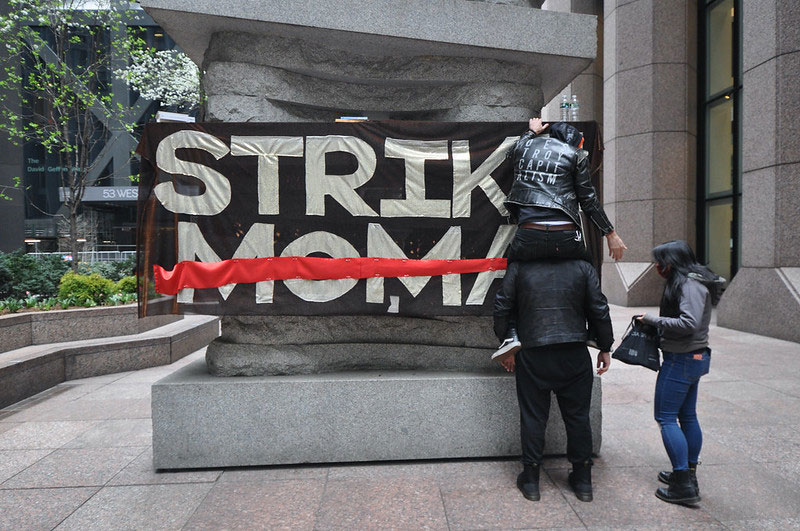| Subscribe via E-Mail | Subscribe via RSS | |
Submit a News Item |
![]() NYC nonprofit takes on a journalism assignment
NYC nonprofit takes on a journalism assignment
Nov 20, 2009; Crain’s New York Business | Nonprofit Quarterly has frequently reported on nonprofit media ventures of late (here, here, and here), and the sale of the investigative public policy journal City Limits offers an interesting take. The purchasers—the Community Service Society of New York—are a major NYC nonprofit, with a $19 million budget and $125 million endowment. This marriage of convenience was born out of a decision to find a parent company that could build the momentum that City Limits couldn’t attain on its own. CSS’s President, David Jones, said the publication’s board of directors and editorial staff will operate independently from CSS to avoid any potential conflict of interest.—James David Morgan
![]() Nonprofit wage increase closer in Australia
Nonprofit wage increase closer in Australia
Nov 5, 2009; Third Sector Magazine | At Nonprofit Quarterly, we’ve long monitored issues of trying to raise the wages of nonprofit employees above sub-living wage levels (see “Nonprofits Need Better Pay”, decrying a movement that assumes stipended volunteers are a substitute for creating and supporting decent livable wages for career-track professionals). Australia’s Third Sector magazine describes a government dynamic that we Americans might want to watch and learn from. Australia has a “fair work” system which is meant to overcome local and state laws that leave some workers grossly disadvantaged compared to their peers elsewhere. Earlier this month, the cabinet minister in overseeing this program announced that she would make sure that the law covers “social and community services sector workers” (basically akin to U.S. human services/youth employees working for government agencies and nonprofits). Here’s the remarkable concept we can all learn from: The Australian law refers to “a right to equal pay for work of comparable value as well as equal value.” It’s particularly important because these social and community services sector workers, some 200,000 or so, are mostly women—87 percent. One of Australia’s national unions endorsed this “as a vital step towards long-awaited pay increases for community workers. Low wages have meant the community sector has long-battled workforce shortages and problems of attracting and retaining well-qualified staff.” A case in Australia’s Queensland increased wages in this sector by 37 percent over a three-year period, and the nation may be moving to incorporate the Queensland compensation levels in the national fair work system. Good for the Aussies! Will their example help the U.S. realize that below-living-wage stipended volunteers are not an adequate substitute for decent salaries and career paths in the human services field here?—Rick Cohen
![]() Russian Leader Expresses Support for Nonprofits
Russian Leader Expresses Support for Nonprofits
Nov 23, 2009; New York Times | President Dmitri A. Medvedev called yesterday for tax incentives and other measures to assist Russia’s beleaguered nonprofit groups. In the recent past Russian nonprofits have been given short shrift and called “tools of the west” by former President Putin. Nonprofits—especially those with foreign funding—were under strict scrutiny, some say even harassment. Though President Medvedev seems to be taking positive steps, groups that carry out what ruling party officials may view as provocative work, like human rights or election monitoring, may continue to face pressure. As we know, the former president has the current president’s ear.—Aaron Lester
![]() Charity Bank launches social investment bond for Liverpool
Charity Bank launches social investment bond for Liverpool
Nov 19, 2009; Third Sector Online | The U.S. has a strong tradition of community development financial institutions (CDFIs) that receive government funding and commercial bank deposits for re-lending to community ventures such as affordable housing, charter schools, and community facilities. But for socially-minded individuals, often the choice is between making donations to charities or depositing money in national or international socially responsible funds managed by the likes of Calvert, Domini, and Parnassus, just to name three. In the UK, Charity Bank is working with local organizations to create “social investment bonds” targeted to specific localities. For example, the Bank has announced a new £5 million social investment bond created in partnership with Liverpool Vision, an economic development entity established by Liverpool City Council. The money raised by the bond will be used to provide loans of between £50,000 to £2 million to social enterprises and community organizations in north Liverpool and south Sefton. If we read this correctly, this is the second of Charity Bank’s local or regional investment bonds, having previously done one for a community in Wales. Charity Bank seems to be doing okay despite the international financial sector meltdown (compare to the troubles affecting Shorebank in Chicago, which we’ve covered in this Newswire). At Charity Bank’s Web site, there are a number of creative options for even the smallest depositor. This looks like the intersection of two interesting movements—the democratization of banking and the expansion of the capital markets for social and charitable entities. There’s probably much here for us in the States to learn from.—Rick Cohen
![]() Even big nonprofits trim programs
Even big nonprofits trim programs
Nov 23, 2009; Washington Post | To many, Thanksgiving and football go together like pumpkin pie and whipped cream. Some football fans will have one less team to root for this Thursday as Boston’s Northeastern University football team has become a casualty of the down economy. After 74 years the program has called it quits. The decision is the result of a two-year inquiry, involving students, trustees, staff and representatives from all corners of the nonprofit university. The cut will save an immediate $3 million, and “a multimillion investment in the future,” according to Athletic Director, Peter Roby. Likely in part due to Northeastern’s 4.9% tuition hike over last year, the athletes will retain their scholarships.—James David Morgan
Sign up for our free newsletters
Subscribe to NPQ's newsletters to have our top stories delivered directly to your inbox.
By signing up, you agree to our privacy policy and terms of use, and to receive messages from NPQ and our partners.
{source}
[[script language=”javascript” type=”text/javascript”
src=”http://feeds2.feedburner.com/nonprofitquarterly/dailydigest?format=sigpro”]]
[[/script]]
{/source}













